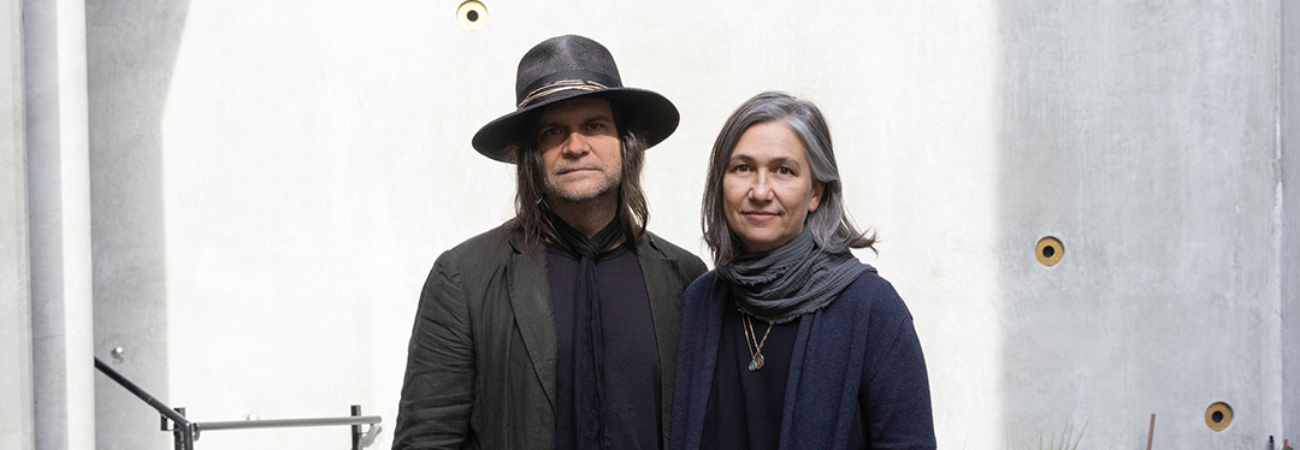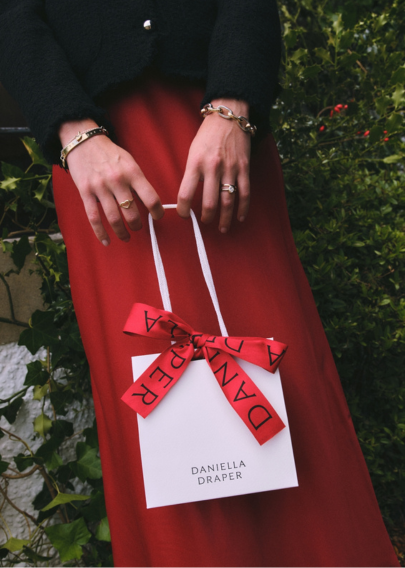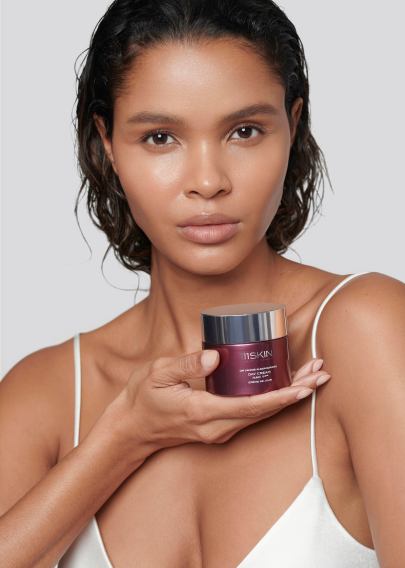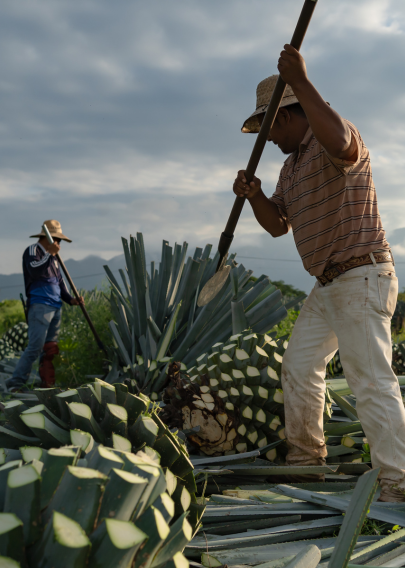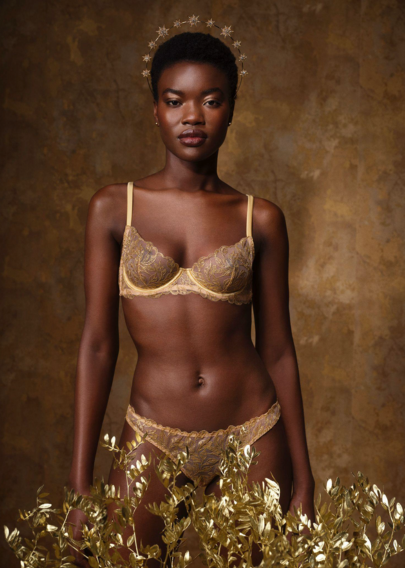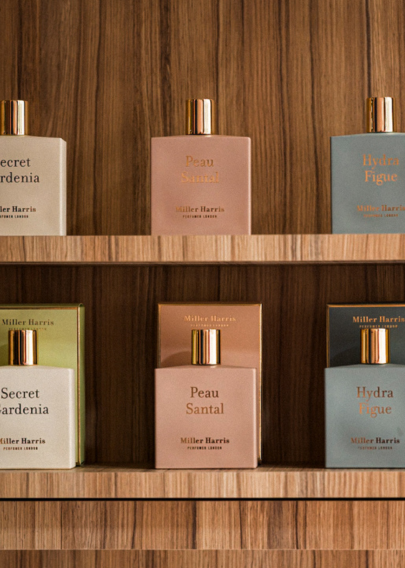Pyrrha’s designers, Wade and Danielle Papin, established Pyrrha in 1995. With no prior jewellery experience, the two built their pieces through trial and error – and have remained committed to following their own rules. After designing a few modern collections, new inspiration struck that taught them to embrace the beauty of imperfection, ultimately redirecting them to design the talismans they are known for today. With strong values of preserving the environment, Pyrrha is a product of a shared belief in sustainability. As a member of both Positive Luxury’s Real Changemaker community and the Responsible Jewellery Council, Pyrrha operates with a desire to not only do no harm, but to make things better in the world. In this Sustainability Spotlight, Wade and Danielle highlight what it takes to create a zero-carbon-certified studio, in addition to the various sustainability-related challenges they encountered along the way. They give us insight into how they select their suppliers to ensure they align with their values and how they aim to create positive change within the jewellery industry.
. . .
Hi Wade and Danielle, can you tell us about Pyrrha and how your business all began?
In 1993, we met, fell in love and began experimenting with what would two years later become Pyrrha. Neither of us had a background in jewellery, but we both had an affinity for art, and we learned all that we could from books at the library (the internet wasn’t really a thing yet). A lot of trial and error – heavy on the error – led us down an unconventional path to success. Our first collections were all modern offerings that drove us into the spotlight and were carried by design shops worldwide, but our look changed dramatically when we realised that what we were creating no longer fed our souls. In 2004, our estate sale discovery of a dusty box of badly damaged antique wax seals shifted our focus and, in a way, brought Pyrrha home. The seals inspired us to elevate the beauty of imperfection, and they became the heart and soul of our work. Our new line of meaningful talismans, inspired by those original wax seals, aligned with our love of other beautifully flawed creative forms like music and art. Initially, our revamped collection received a lukewarm response from retailers who thought the worn, antiqued look wouldn’t appeal to customers (which was valid considering that “bling” was ubiquitous at the time). This change even led to the loss of a number of accounts, but we remained true to our vision. We chose to create jewellery that resonated with us personally, even if it meant risking our established market. Today, we believe that without this bold shift, Pyrrha might not have survived. Our commitment to remaining authentic not only sustained us but also shaped Pyrrha into the brand it is today.
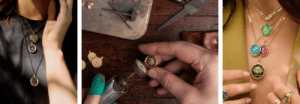
You’ve created an incredible zero-carbon certified studio in Vancouver to create your jewellery, can you tell us more about that decision making?
The design and construction of our new more sustainable studio and showroom was almost 8 years in the making. The 100-year-old house that’s home to our showroom was one of our original studios but we quickly outgrew it. We always envisioned a space where we could become a shining example of vertical integration in the jewellery industry – a space where we could control every aspect of our production and ensure that we were operating as sustainably as possible. We are a true anomaly in the industry in that we design, prototype, cast, finish, package, and ship all out of the same space. It was equally important to us to be centrally located in the city so we could open up our studio to the public, keep our staff from having to commute long distances, and for us to maintain our connection with the local community.
What were some of the main sustainability challenges when creating the studio, you had to overcome?
Building in Vancouver is very expensive, but building sustainably has an additional set of challenges. Many of the materials we needed to source are difficult to come by as they’re not routinely used and are unfamiliar to many tradespeople. There was a lot of trial and error as we figured out ways to do things differently, requiring special permits and permissions along the way. The primary building material was CLT (cross-laminated timber) which, while extensively used in Europe, is relatively unusual in Canada…especially for a tall tower with a small floor plate. Our geothermal heating and cooling required deep drilling that hit a lot of unexpected rock that needed to be removed at great cost, and the site itself was difficult to access. We had to move the house off-site in order to build the tower, then bring it back and restore it to its former glory. It was challenging to achieve Zero-Carbon certification from the Canadian Green Building Council because a build on such a small scale was new for them as it’s set up for much larger development. In order to control heat gain from southern exposure, we installed photochromatic windows that tint according to the angle of the sun – in fact, every material had to be scrutinised to achieve our goal.

When it comes to sourcing, what are some of the considerations you take to choosing and working with your suppliers?
We require that our suppliers uphold industry-specific certifications. In addition to being Butterly Mark certified, we’re also certified by the Responsible Jewellery Council (RJC). As a member, we help to transform supply chains to be more responsible and sustainable. For example, our RJC certification notes that our cast gold products are made using 100% recycled gold purchased from suppliers with Precious Metals Gold certification by SCS Global Services. By working closely with our suppliers, we can better understand their operations, influence their practices, and ensure that they continue to meet our high standards.
Why was it important for you as a business to seek third-party verifications for your sustainability actions and performance?
Third-party verifications are a crucial aspect of our sustainability initiatives because they build trust. There are far too many companies claiming to be sustainable and it’s important for our customers to be able to break through the marketing clutter as greenwashing causes a tremendous amount of damage to our industry. These certifications require us to be transparent about our processes and impacts. They ensure we’re not just talking about sustainability but actually implementing it in measurable ways. Also, these third-party certifications involve regular audits or assessments, which help us identify areas for improvement. They provide benchmarks against which we can measure our progress over time so that we can continue to improve.
Finally, what would you say is your immediate focus for creating positive change in the jewellery industry?
We’re focused on educating consumers about the impact of their purchases and encouraging them to ask the right questions. We believe that change will come when consumers leverage their buying power, voice their concerns, and hold companies accountable for their practices. It’s no longer enough to accept “we strive for sustainability in every aspect of our business” – we need to ask the hard questions and if answers are unclear, we need to probe further.
LEARN MORE ABOUT BUTTERFLY MARK CERTIFIED PYRRHA
< Back
